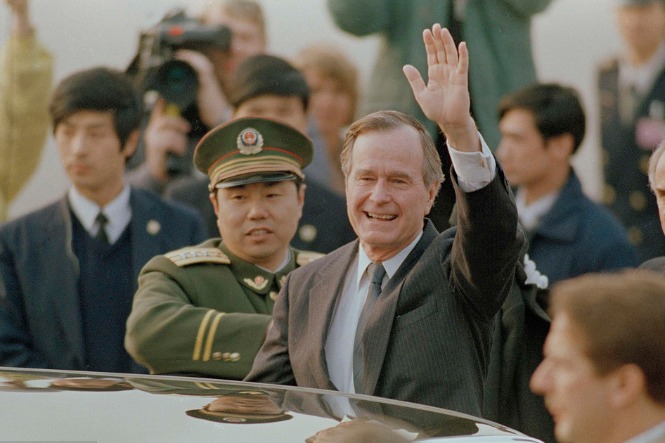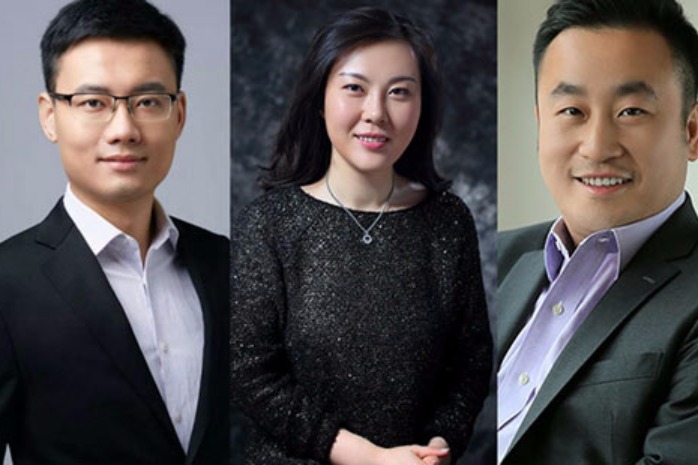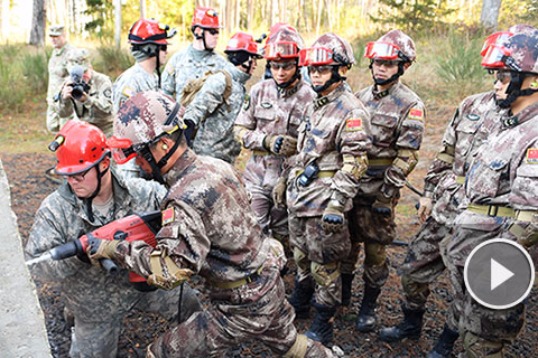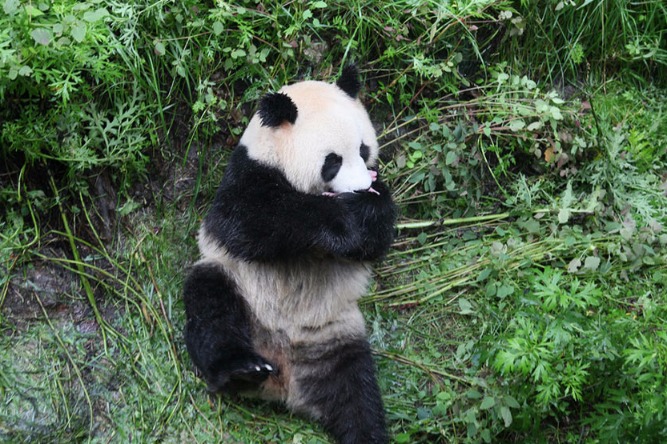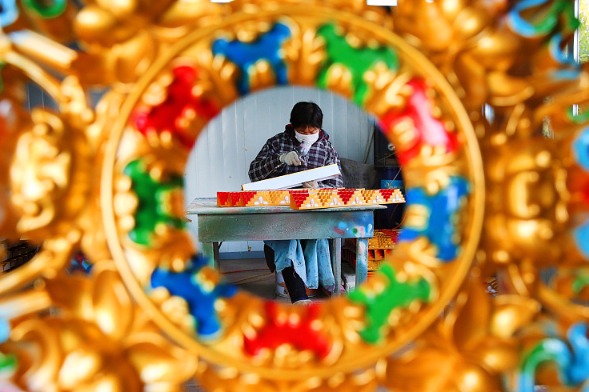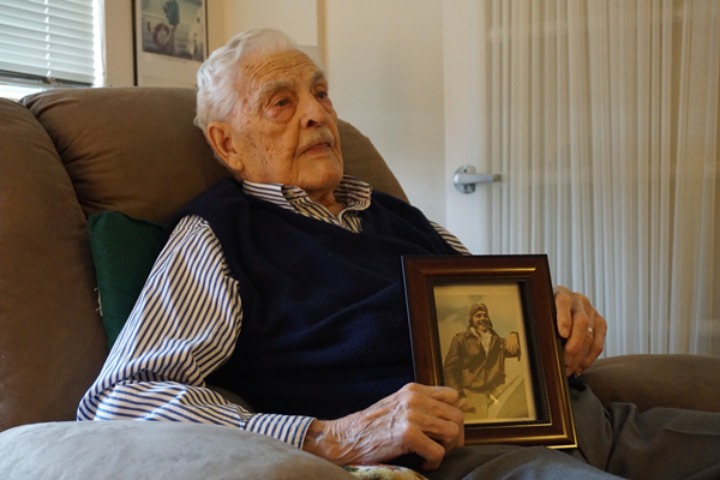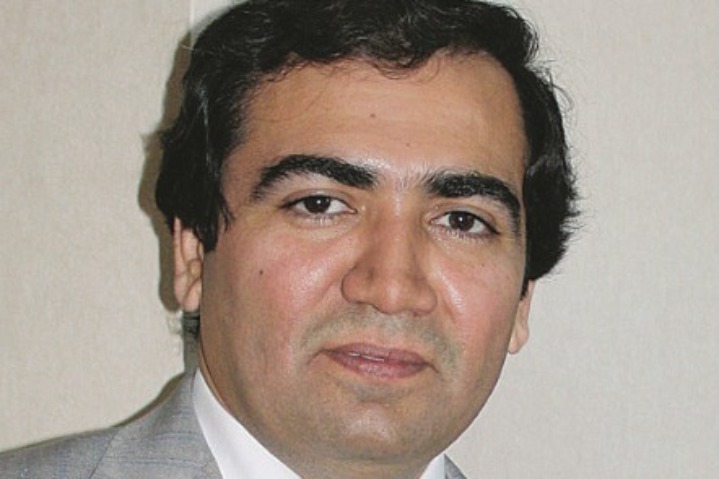The genius behind the ’85 wave
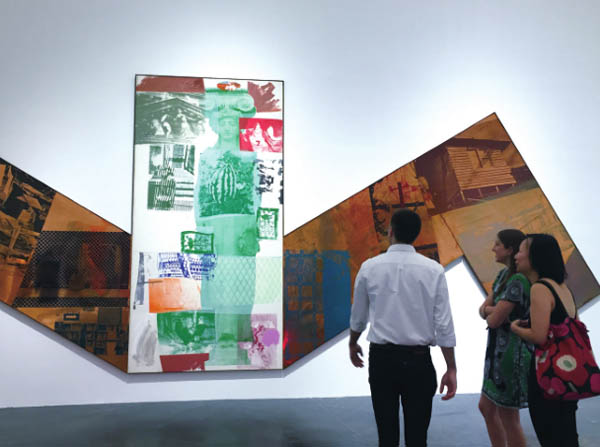 |
| Part of The 1/4 Mile art piece created by Robert Rauschenberg. The exhibition will run till Aug 21. li jing / china daily |
In 1985 American artist Robert Rauschenberg traveled to Beijing to held a solo exhibition, ROCI China, at the institution now known as the National Art Museum of China. More than three decades on, his work has returned to the Chinese capital for a second major show.
Rauschenberg in China, a retrospective of the late artist’s work, opened at the Ullens Center for Contemporary Art on June 12 and runs until Aug 21.
“Reviewing Rauschenberg is equivalent to reviewing the development of Chinese contemporary art,” said art critic Li Xianting.
In the 1980s, he said, China’s exposure to Western art was limited to reproductions in catalogues, and the understanding of art was largely confined to academic painting, sculpture and printmaking.
In contrast, Rauschenberg’s enthusiasm for popular culture and rejection of the seriousness of abstract expressionists led him to concentrate primarily on collage and embrace materials traditionally outside the reach of artists. He would cover a canvas with house paint, or ink the wheel of a car and use it to create a drawing on paper.
The 1985 exhibition received more than 300,000 visitors over three weeks.
“He brought great excitement and stimulation to Chinese contemporary art, especially to nonartists,” Li recalled.
“He challenged Chinese audiences — that stuff like that could be called art.”
Contemporary artist Li Xinjian added that Rauschenberg’s work inspired an emerging generation of Chinese artists that would later come to be known as the ’85 new wave.
“Visiting the retrospective exhibition now, you find he is very different from 30 years ago,” he said.
Rauschenberg in China at UCCA is the first major exhibition since the artist’s death in Florida in 2008. Among the works on display is The 1/4 Mile or 2 Furlong Piece, which is regarded as one of his most important creations.
Stretching 305 meters and made up of 190 parts, the piece was completed over a period of 17 years, from 1981 to 1998, and reflects the major themes throughout his career, from his white paintings, “combines”, cardboards and “gluts” to collages composed with found images as well as the artist’s own photographs.
There are also some Chinese elements, such as the inclusion of photos he took while in the Tibet autonomous region.
David White, one of the exhibition’s two curators and the artist’s former long-time assistant, said, “It is a very journalistic record of Rauschenberg’s involvement with the world, in all kinds of material.”
He described the artist as outgoing, upbeat and generous, adding, “It shows in his art (in terms of) the openness and welcoming of all kinds of experiences.”
Susan Davidson, his fellow curator, recalled the artist as a terrific cook: “He cooked like he painted; he just kept adding more materials.”
Rauschenberg kept adding and revising The 1/4 Mile over the years. The first major display for the work was in 1987 when it went on show for a year at the Metropolitan Museum of Art in New York. Yet the artist continuously added more material, and in keeping with his ideology of “nonintention” the work has been presented in various configurations over the years.
UCCA director Philip Tinari said the exhibition marks the first time the full piece has gone on show since 1999, when it appeared at the Massachusetts Museum of Contemporary Art in North Adams.
In addition to The 1/4 Mile, visitors can also see Study for Chinese Summerhall, two portfolios of images taken during Rauschenberg’s first trip to China in the summer of 1982.
These rare images were made as studies for the 30-meter scroll-like work, which was also one of the centerpieces of the ROCI China show. On show are also documents and archived material from the 1985 exhibition.
Rauschenberg’s interactions with China started in 1982 when he made a trip to one of the world’s oldest paper mills in Jingxian, Anhui province, to collaborate on an art project.
That trip resulted in his 1985 exhibitions in Beijing and Lhasa, capital of the Tibet autonomous region. It also inspired him to found the Rauschenberg Overseas Culture Interchange, a serial project of international exhibitions held between 1984 and 1991 in countries including Mexico, Chile, Venezuela, Japan, Cuba, the then-Soviet Union, Germany and Malaysia.
The series culminated in a retrospective at the National Gallery in Washington in 1991.
lijing2009@chinadaily.com.cn







